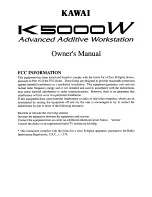
English
22
C.A 6423 Earth Tester
N.B. :
In the case of low value resistances, it becomes necessary to take into
account the resistance of the leads (approx. 22.5 m
:
/m for those supplied as
accessories). To overcome the resistance of the leads, we advise the use of a (4
pole) Earth/Resistivity Tester, on 4-wire connection.
Do not forget to reconnect the earth points after measurement.
3.3 FAULT SIGNALS
x
Display of a negative measurement.
Reversal of rods H and E or rods S and E.
Re-connect the leads correctly.
x
Displayed measurement value is 1---.
Overrange (R > 2000
:
)
Check the connections.
x
Flashing
of
FAULT
light
❽
.
Fault in current circuit (E - H). Flashing indicates that the voltage between the
terminals E and H is greater than 30 V
peak
.
This may mean that:
- the resistance of the current circuit between E and H is too high,
- the interference voltage in the circuit (E - H) is too high,
- the fuse is blown.
Check the rods, the leads, the connections and the fuse (see Ch.5.1.3).
x
Flashing
of
HIGH RESISTANCE
indicator
❾
Fault in the voltage circuit (E - S). At the start of the measurement, the instrument
automatically checks the resistance between E and S. If this is greater than 50k
:
,
the indicator
❾
begins to flash. This means that the measurement is likely to be
very affected by the resistance of the voltage circuit.
NB:
The indicator flashes throughout the measurement, even if the resistance
falls below 50k
:
during it.
Check the rods, the leads and their connections.
x
Flashing
of
HIGH NOISE
indicator
❿
Presence of interference voltages in the voltage circuit. Flashing indicates noise
greater than 13V
peak
between terminals E and S. These interference signals
disturb the measurement.
Move the rods.
















































